Last week I opened a new exhibition, entitled Signs of Life, at Nome Gallery in Berlin. It’s up until June 17th if you have a chance to see it. It’s a ‘dual solo’, or collaboration, with my friend Jonas Staal, whose parallel exhibition, Comrades in Deep Future, is closely aligned in theme…
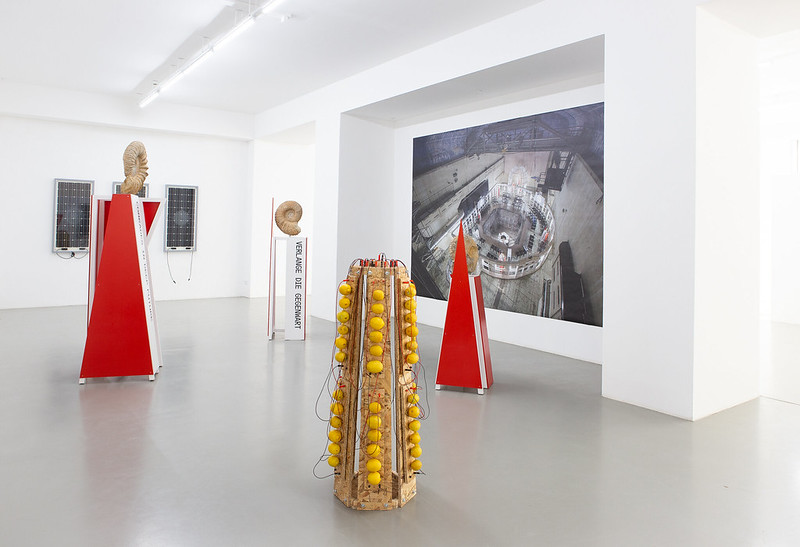
The title of my part of the exhibition is taken from Werner Herzog’s first feature film, Lebenszeichen (1968), in which a group of German soldiers, patrolling an occupied Greek island, come across a vast field of windmills, and are driven mad by the experience. I was, and remain, fascinated by this moment of rupture, this exposure to the awesome power of non-human agency and vitality (as is Herzog, who is still talking about his own encounter, as in this recent interview).
For the exhibition, I recreated one of these windmills, which are still found on the Lasithi plateau in Crete, although in much smaller numbers than when Herzog visited in the 1960s.
Here it is being tested in windy conditions on Aegina, where it successfully charged a mobile phone – via a DC motor driven as a dynamo and a USB socket – although I have greater ambitions for it:

And here it is installed in the gallery in Berlin:
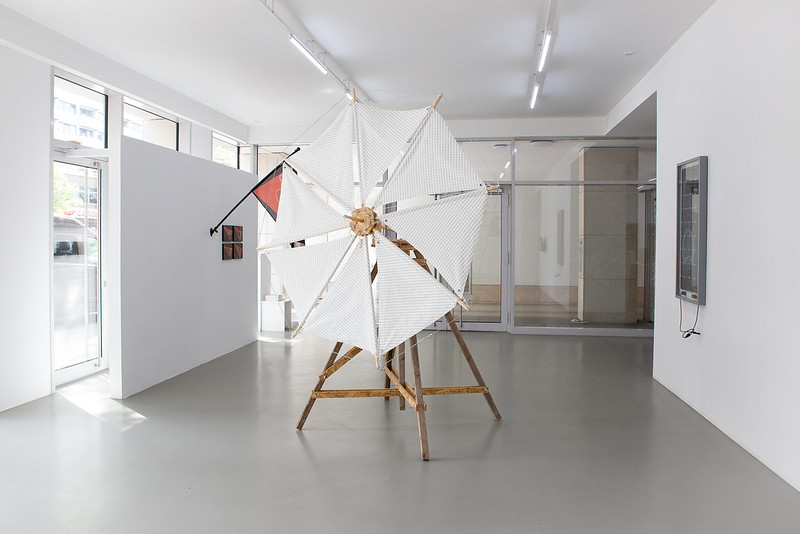
The windmill was constructed out of surplus wood from another construction project: a whole building which my partner and I built during lockdown as living space and prototype for a larger house-building project. Being quite new to carpentry, this was a pretty big undertaking, but it was achieved following the framework of Water Segal, a German-British architect who in the 1950s-70s developed a method for self-building which could be followed by anyone, including those who had never picked up a tool before. In the decades since, collectives and individuals have built streets and communities for themselves across Britain using his method.
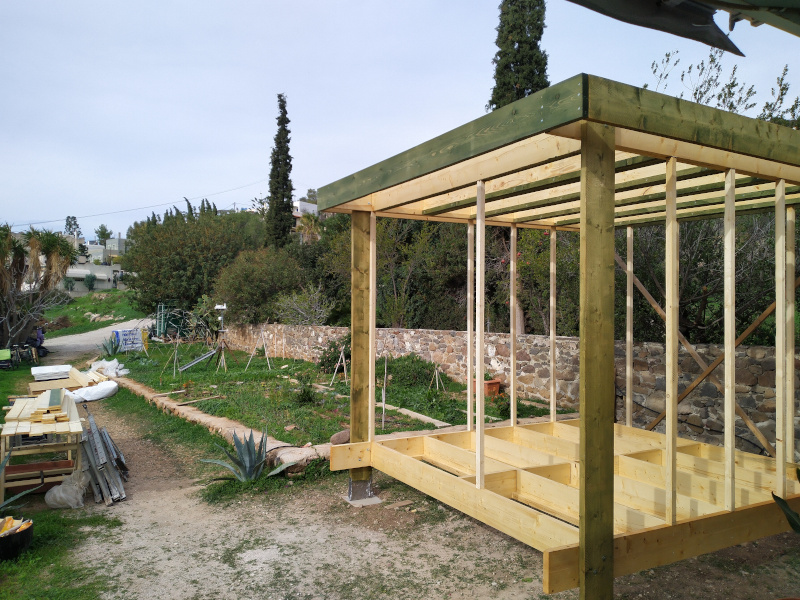
Segal’s insistence that anyone could build was a big inspiration for me – not only as a novice carpenter, but as a continuation of the kinds of ideas of agency, education, and empowerment which my work on computers and networks has also pushed towards. The windmill is dedicated to him. (In our studio on Aegina, we’ve also been working with the DIY furniture frameworks of Enzo Mari and Ken Isaacs, and running workshops on renewable tools such as solar ovens and desalinators).
For this exhibition, I had also been thinking a lot about what it would mean to bring ‘power’, in whatever form, from Greece to Germany, to generate it and redistribute it, literally and metaphorically. I thought about storing this generated energy and transporting it physically in some way, in batteries or compressed air – and then I remembered early science experiments, and particularly, the lemon battery:
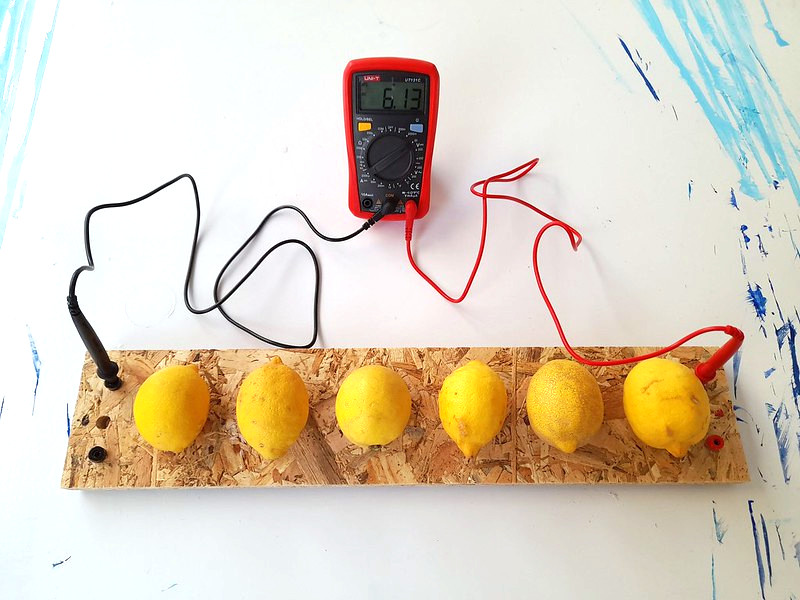
Aegina Battery, as this work is called (see the top image or this gallery) is a 12 x 6 cell lemon battery – that is, 72 lemons, connected by zinc and copper terminals, in twelve six-cell removable panels, which can be wired up in series or parallel to produce between ~6 and ~60 Volts (wiring in series increases the voltage at the expense of current, and vice versa). The lemons are essentially solar batteries, and the ones used in Berlin are expressly imported Greek lemons: the power of the Greek sun, released in Germany.
While working on this project, I came across two examples of prior art: Joseph Beuys’ Capri Battery of 1985, and Victor Grippo’s Energy of a Potato from 1972, both of which use the same approach to dramatise the inherent power of objects and the environment. Grippo expanded his work into a full battery wired to a voltmeter, while Beuys’ remained conceptual and non-functional: by contrast, the Aegina Battery actually lights a lamp – albeit a tiny LED. We still have a long way to go.
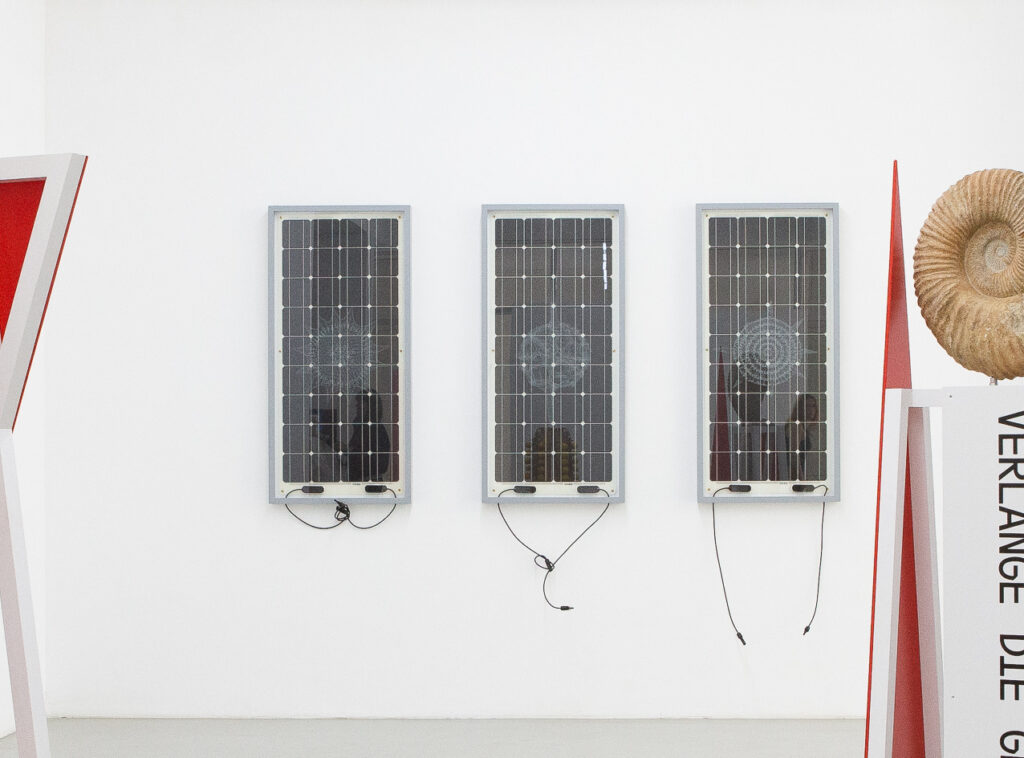
All the works in the show are thus fully functional – works that do work, in a phrase I’ve found myself using more and more in framing ecologically-relevant and perhaps useful work – including these five solar panels, each engraved with an example of a radiolaria: microscopic sea creatures which construct elaborate exoskeletons out of silica.
Like the battery, these panels emerged from a simple question: how to make solar panels more interesting, and perhaps more attractive – an idea, in turn, connected to questions around the role of the artist and the imagination in our current ecological emergency. Solar panels look the way they do because you want to absorb the maximum amount of light which falls upon them: colouring or decorating them in some way would obstruct this. (It’s a related problem to the Autonomous Trap, but rather than a shared umwelt, the problem is how to make something visible to humans, but transparent to machines?)
In my research, I discovered that it’s actually possible to engrave the glass covering solar panels in such a way that they absorb more light – a process known as light trapping – which suggested that decoration – ornament – could actually increase the efficiency of the apparatus. Unfortunately, I don’t have access to the laboratory-grade equipment – yet – to engrave at the nanometer scale, but after some experimentation it was possible to design engravings which at least did not reduce the efficiency of the panel. I would like to make more of these. (See a connected prototype here.)
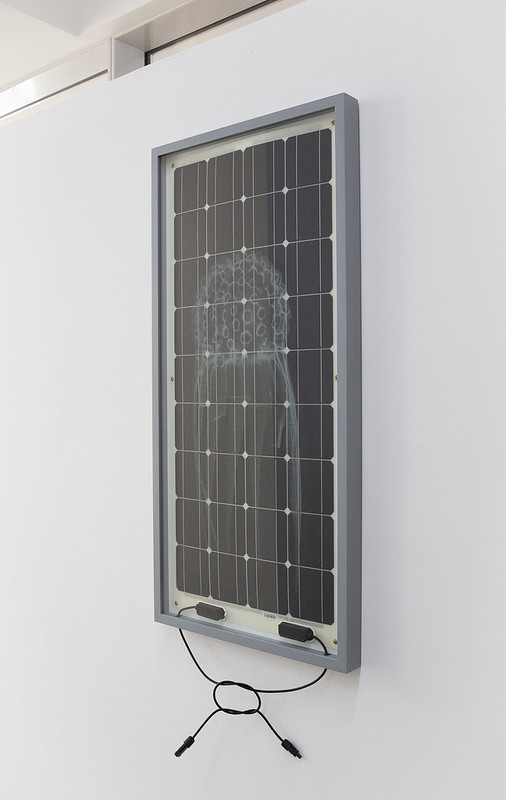
The radiolaria were first celebrated by Ernst Haeckel, the German naturalist and illustrator who created the bestselling Kunstformen der Natur, and coined the term ‘ecology’, as well as being a key bridge between the German romanticism of the early nineteenth century (in which the author of Lebenszeichen‘s source novel was also a key player) and the emerging scientific movement. He was also, as Dani Admiss points out in her wonderful essay for the exhibition, which I urge you to read, ‘both a paternal grandfather of ecology and a “prototypical ecofascist”’, an anti-semite and a eugenicist.
What work these works do is crucial, which is why I am so happy to have them in dialogue and congress with Jonas Staal’s Interplanetary Species Society (which I participated in in Stockholm in 2019) and his ongoing Court for Intergenerational Climate Crimes (an adaptation of which will be presented at the Helsinki Festival this summer, as part of a programme curated by Lucia Pietroiusti and myself). The presence of the Neo-Constructivist Ammonites – also participants in the ISS – should really be experienced for oneself.
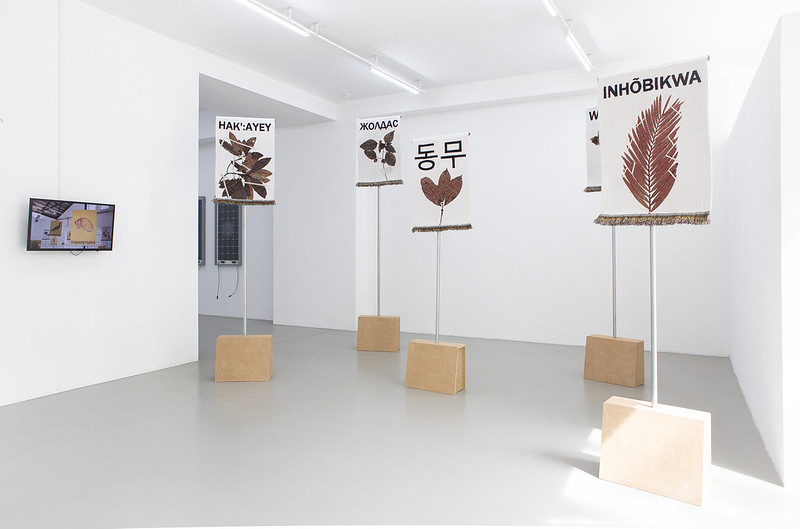
I was initially uncertain about how these works – objects designed to work, and which mostly only work outside – would play in a gallery (beyond being ironic commentary on the insufficiency of the white cube to address such urgent matters). But the effect, to me at least, is one of potential: it should be obvious to anyone that Jonas’ banners, shown above – reproductions of extinct plants, labelled with the word ‘comrade’ in a multitude of languages, and standing as witnesses, like the ammonites, to the court – are waiting to be picked up, and carried into the street. They are active entities, organisms, beings; waiting on us to enact a shared future, together.
Comments are closed. Feel free to email if you have something to say, or leave a trackback from your own site.